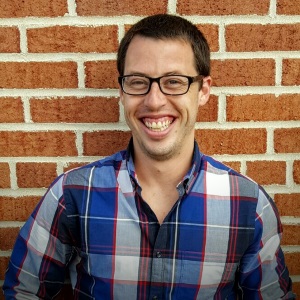Amber: Well, hello everyone. Thank you. All right, so I'm going to start with a very simple question. What is the best team that you've ever been on? Think back to all the teams you've been a part of—through your career, maybe even before, like a high school sport. What made that team so great?
Hopefully, you're all honing in on a team by now. Maybe it was because you really loved working with those people and enjoyed coming to work every day. Maybe it was a high-performing team where everyone knew each other’s strengths and weaknesses and played off them effectively.
Today, we’re going to talk about a process called self-selection, which allows you to form teams like the ones you’re thinking about right now. At Opower, in just three weeks, we allowed 40 people to choose what they worked on and who they worked with using this process. It has enough guide rails to ensure that even work no one typically wants to do—like maintenance projects—gets covered, and people are actually happy about it.
As Bill mentioned, I’m Amber King. I’m currently the Head of Product Ops at Capital One Labs, but I used to run the Agile Program Management Office at Opower, where we first tried this process.
Setting the Context
Jesse: And I’m Jesse Huth, a Senior Agile Program Manager at Opower. Normally, this is where we'd ask you questions and get your hands in the air, but in the interest of time, I’ll assume you all agree with the questions I’m going to ask and move through them quickly.
I’m sure we’ve all worked at places where teams felt stale, where people hadn’t moved around in a while. We’ve all dealt with retention issues and know team members who’d rather be working on other projects or learning new skills. That was the situation at Opower a few years ago.
About 18 months ago, in March 2016, we had a layoff that disproportionately impacted one of our tribes. Some team members left, others moved to different tribes, and we suddenly had far too few people to support all the products and components within our organization.
Introducing Self-Selection
Amber: This is where David Mole and Sandy Mamoli come in. I was lucky enough to meet David at Agile 2015 in Washington, D.C. He and Sandy had pioneered self-selection at a company called Trade Me in New Zealand, where they let 160 engineers pick their teams and projects.
What they found was remarkable—after six months, no one wanted to switch teams because they were happy with where they had self-selected. Even better, productivity had skyrocketed. This idea stuck with me, and I thought about ways we could apply it at Opower.
When I first introduced the concept to senior management, their initial reaction was skepticism. It took time to build buy-in, but after the layoff, we had the perfect opportunity to pilot this approach.
What you’re seeing here is a one-pager from Nomad8, David and Sandy’s company, summarizing the self-selection process. It culminates in an event where teams literally walk around a room and place themselves onto teams posted around the walls. Structured rules make this event work well, and we’ll dive into those details shortly.
Planning the Self-Selection Event
The entire process takes about three to six weeks. At Opower, we completed it in just three weeks—an extremely fast timeline. If you're considering a self-selection event, the first step is research. I highly recommend Creating Great Teams by David and Sandy. We also have links to blog posts with condensed guidance.
Once you commit to the process, start with the end in mind—choose a date when teams need to be formed and work backward. You’ll need to determine team structures, prepare materials, pick facilitators, and secure locations.
Determining Teams and Socializing the Process
Jesse: At Opower, we had too many products and too few people. The first step was aligning senior management around our top six priorities. We then turned those business objectives into teams and assigned product and engineering managers.
At this stage, it's crucial to socialize the process. Get everyone involved in a room, explain how it will work, and allow plenty of time for questions. People need to feel safe for the process to succeed.
Executing the Event
Amber: Once the groundwork is set, focus on logistics. Teams need clearly defined sheets listing their name, leadership, required skills, and objectives for the next three to six months.
On the day of the event, each team lead presents their team, explaining their mission, work scope, required skills, and how the role can help team members grow. Then, participants get up and choose their teams.
Iterations and Adjustments
Jesse: After the first round, we checked in with all teams:
- Some were ready.
- Others had too many people.
- Some needed additional members.
We set the clock for another 10 minutes and let people adjust. Eventually, we hit a stalemate—some teams were overloaded while others were still missing members. We facilitated a discussion where one engineer expressed interest in front-end work, which happened to align with a team needing that expertise. That final shift completed our teams.
Results and Insights
Amber: We surveyed participants immediately afterward. Here’s what we found:
- 88% were happy with their team.
- 0% were unhappy.
- The remaining 12% were product and engineering managers who had pre-assigned teams.
Additionally, 40% of participants chose their team based on what was best for the company—yet they were still happy with their choice, likely because they had a say in the process.
Lessons Learned
Jesse: If you're considering this for your organization, here are key lessons:
- Set expectations early. People may be skeptical, but clear communication builds confidence.
- Don’t share team assignments in advance. Releasing details too early leads to informal team formation.
- Have moderators. Stalemates happen, and facilitators help break deadlocks.
- Keep leadership out. This is about empowering employees to make decisions.
- Hold the event in person when possible. Remote participation is feasible but adds complexity.
Final Thoughts
If you want to learn more, visit o2agility.com for case studies. Nomad8 has great self-selection resources, and Creating Great Teams is a fantastic book.
We’ll be around for questions today and tomorrow, or you can reach us at [email protected]. Thanks, everyone!






